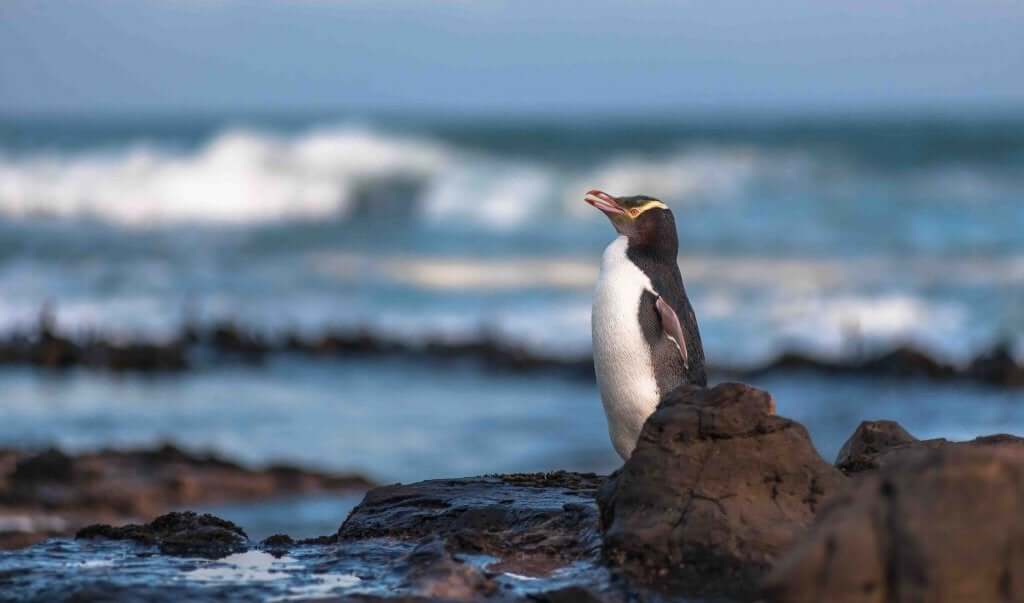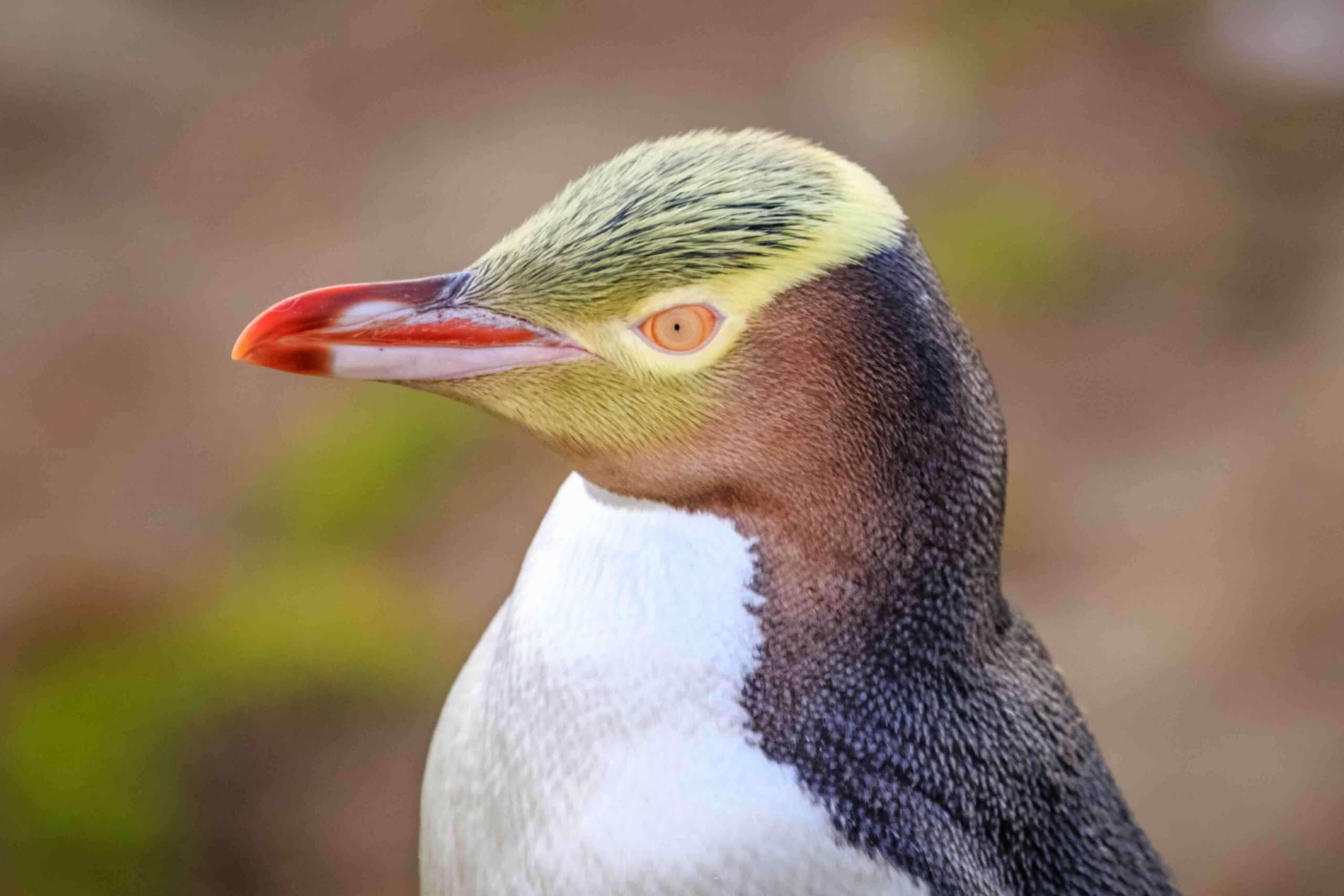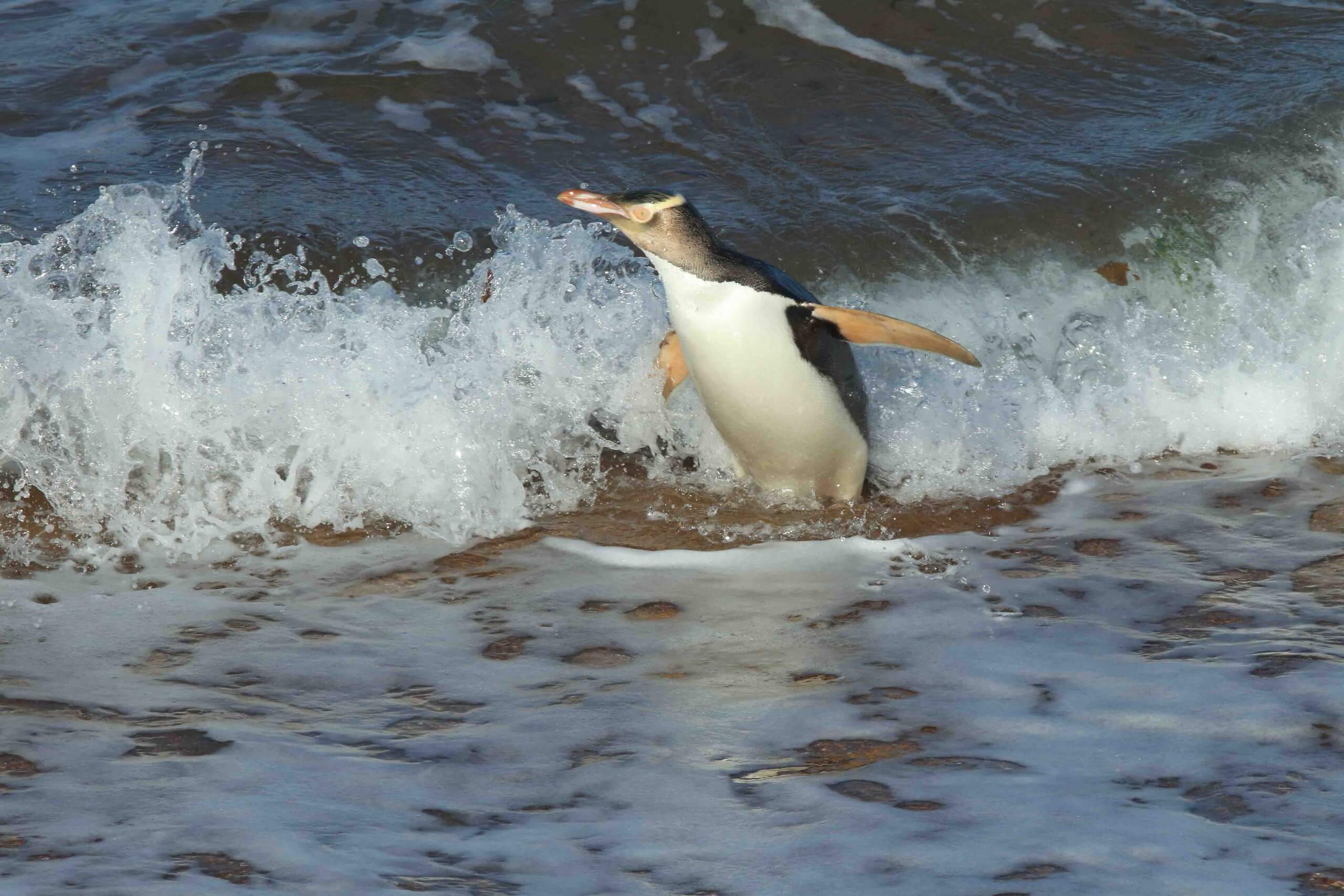The Yellow-Eyed Penguin Is in Danger of Extinction

The fishing industry has affected penguins in a major way. However, the case of the yellow-eyed penguin (Megadyptes antipodes) is much more serious. This species’ numbers are dropping drastically as a result of fishing.
The yellow-eyed penguin
The yellow-eyed penguin is the last member of the Megadyptes genus in existence. It lives in the southeast of New Zealand, in the South Island, Stewart Island, Auckland Islands, and Campbell Islands.
The most distinctive feature of these animals is their yellow eyes, from which they get their name. They can measure between 24 and 31 inches tall, meaning they’re much smaller than large penguins like the Emperor penguin. Just the same, they’re larger than many other species, as they can weigh up to nearly 19 pounds.

These penguins reproduce in August and both mother and father build their nest among the dense vegetation of the islands. Their behavior during this time period is territorial and aggressive. Males and females share the responsibility of incubating their eggs, which they defend with tenacity.
The yellow-eyed penguin population consists of some 6000 specimens, although there are only 1500 reproductive pairs. For this reason, this species is in danger of extinction–even more so than other penguin species. This is why the threat that fishing exploitation poses is such a concern.
These penguins reproduce in August and both mother and father build their nest among the dense vegetation of these islands. Their behavior during this time period is territorial and aggressive. Males and females share the responsibility of incubating their eggs, which they defend with tenacity
The fishing industry is a threat to the yellow-eyed penguin
The problem with these penguins is that they’re unable to see fishing nets in the water. Therefore, they become tangled in the nets and end up drowning or trapped. A recent study demonstrates the havoc that gillnets are causing. In fact, these nets are the leading cause of death among this species in New Zealand, leading to decreases of up to 75% in their population.
Prior investigations had demonstrated that each year, embarkations killed 35 penguins. However, these studies only included 3% of New Zealand vessels, meaning the number of casualties is, without a doubt, much higher. The biologists responsible for studying this problem fear that, at this rate, the species will become extinct in the years to come .

The project hopes to install cameras in every fishing boat in the yellow-eyed penguin’s habitat. At the same time, they aim to cease fishing activity in key areas. This idea brings to mind the recent fishing prohibition in the Arctic regions where melting offers the possibility of exploitation.
A recent study demonstrates the havoc that gillnets are causing. In fact, these nets are the lead cause of death among this species in New Zealand, leading to decreases of up to 75% in their population.
What can we do?
Many times, when we talk about endangered species, it can be hard to understand what that has to do with us. Intensive fishing usually involves trawl fishing, which damages the ocean floor and traps many non-commercial animals, like penguins. This type of fishing damages many different species of animals, including dolphins and sharks.
Therefore, our consumption of meat and fish should be in moderation because of the elevated cost of obtaining them in comparison to vegetable products. But, even greater is the importance of consuming locally and sustainably-fished products. Opting for national or even regional fish is the best way to protect the environment and species like the yellow-eyed penguin from extinction.
Intensive fishing usually involves trawl fishing, which damages the ocean floor and traps many non-commercial animals, like penguins. This type of fishing damages many different species of animals, including dolphins and sharks.
